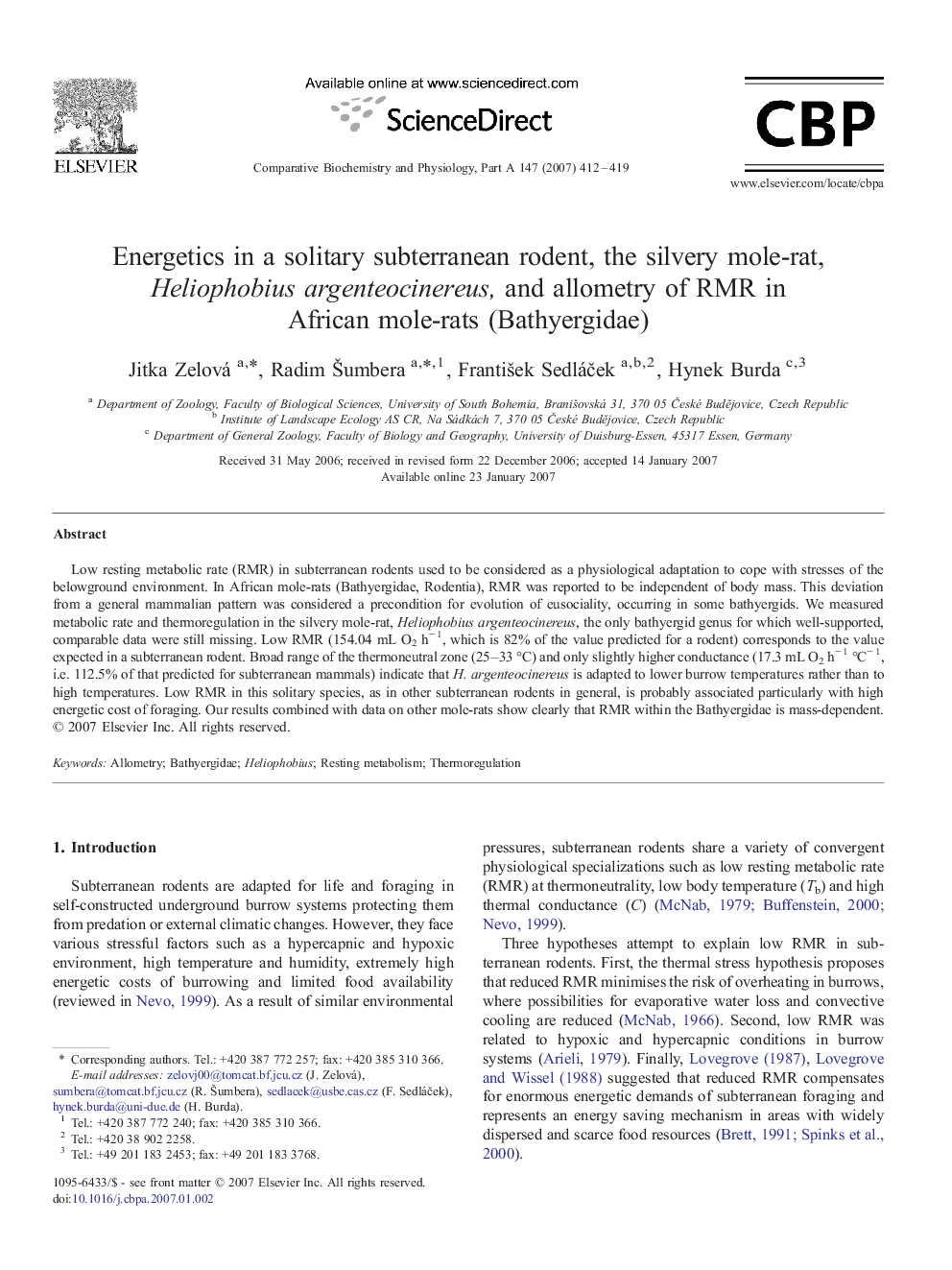| Article ID | Journal | Published Year | Pages | File Type |
|---|---|---|---|---|
| 1974263 | Comparative Biochemistry and Physiology Part A: Molecular & Integrative Physiology | 2007 | 8 Pages |
Low resting metabolic rate (RMR) in subterranean rodents used to be considered as a physiological adaptation to cope with stresses of the belowground environment. In African mole-rats (Bathyergidae, Rodentia), RMR was reported to be independent of body mass. This deviation from a general mammalian pattern was considered a precondition for evolution of eusociality, occurring in some bathyergids. We measured metabolic rate and thermoregulation in the silvery mole-rat, Heliophobius argenteocinereus, the only bathyergid genus for which well-supported, comparable data were still missing. Low RMR (154.04 mL O2 h− 1, which is 82% of the value predicted for a rodent) corresponds to the value expected in a subterranean rodent. Broad range of the thermoneutral zone (25–33 °C) and only slightly higher conductance (17.3 mL O2 h− 1 °C− 1, i.e. 112.5% of that predicted for subterranean mammals) indicate that H. argenteocinereus is adapted to lower burrow temperatures rather than to high temperatures. Low RMR in this solitary species, as in other subterranean rodents in general, is probably associated particularly with high energetic cost of foraging. Our results combined with data on other mole-rats show clearly that RMR within the Bathyergidae is mass-dependent.
